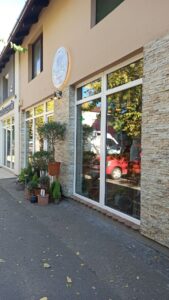Residential complexes with non-standard layouts: is it worth buying?
In recent years, the real estate market has witnessed a surge in residential complexes featuring non-standard layouts. These unique designs often break away from traditional floor plans, offering innovative spaces that cater to modern lifestyles. However, the question remains: is it worth investing in such properties? This article delves into the advantages and disadvantages of purchasing a home in a residential complex with non-standard layouts, providing potential buyers with the insights they need to make informed decisions.
Understanding Non-Standard Layouts
Non-standard layouts refer to residential designs that deviate from conventional configurations, such as open floor plans, multi-level units, or irregularly shaped rooms. These layouts are often characterized by their creativity and flexibility, allowing homeowners to personalize their living spaces in ways that traditional designs may not permit. For instance, a loft-style apartment with high ceilings and large windows can create an airy atmosphere, while a split-level home can offer distinct zones for living, working, and entertaining.
The appeal of non-standard layouts often lies in their ability to maximize space and functionality. Many modern buyers prioritize open-concept living, which fosters a sense of community and connection among family members. Additionally, unique layouts can provide opportunities for innovative storage solutions and multi-purpose rooms, catering to the evolving needs of contemporary households. As urban living becomes increasingly popular, these designs can also help to optimize smaller living areas, making them feel more spacious and inviting.
However, potential buyers should be aware that non-standard layouts may not suit everyone’s preferences. While some individuals appreciate the creativity and uniqueness of these designs, others may find them impractical or challenging to furnish. It is essential to consider personal lifestyle needs and aesthetic preferences when evaluating whether a non-standard layout aligns with one’s vision of a dream home.
Pros and Cons of Non-Standard Layouts
When contemplating the purchase of a residential complex with a non-standard layout, it is crucial to weigh the pros and cons. One significant advantage is the potential for increased resale value. Unique properties often stand out in the market, attracting buyers looking for something different. If the layout is well-designed and functional, it can create a lasting impression, making it easier to sell in the future.
On the other hand, non-standard layouts can also present challenges. For instance, the unconventional design may limit the pool of potential buyers when it comes time to sell. Some individuals may prefer traditional layouts, which could make it more difficult to find a buyer who appreciates the uniqueness of the property. Additionally, non-standard layouts may require more effort in terms of furnishing and decorating, as the irregular shapes and configurations can complicate the selection of furniture and decor.
Another consideration is the potential for higher maintenance costs. Unique designs may necessitate specialized care or renovations, which can add to the overall expense of homeownership. Buyers should conduct thorough research and consult with real estate professionals to understand the long-term implications of investing in a property with a non-standard layout.
Market Trends and Future Outlook
As the real estate market evolves, the demand for residential complexes with non-standard layouts is likely to continue growing. With an increasing number of buyers seeking distinctive living environments that reflect their personal style, developers are responding by creating innovative designs that challenge traditional norms. This trend is particularly evident in urban areas, where space is at a premium, and unique layouts can offer solutions to maximize functionality.
Moreover, the rise of remote work and flexible living arrangements has further fueled interest in non-standard layouts. Homebuyers are now prioritizing spaces that can accommodate home offices, recreational areas, and multifunctional rooms. As a result, properties with creative designs that cater to these needs are becoming increasingly attractive to potential buyers.
However, it is essential for buyers to remain cautious and conduct thorough due diligence before making a purchase. While the allure of a non-standard layout can be enticing, it is crucial to assess the long-term viability of such investments. Understanding market trends, potential resale value, and personal lifestyle needs will ultimately guide buyers in making informed decisions about their future homes.
In conclusion, purchasing a home in a residential complex with a non-standard layout can be a double-edged sword. While these unique designs offer creativity, flexibility, and the potential for increased resale value, they also come with challenges that may not suit every buyer’s preferences. As the market continues to evolve, individuals considering such investments should carefully evaluate their personal needs, conduct thorough research, and consult with real estate professionals to ensure that their choice aligns with their long-term goals. Ultimately, the decision to buy a property with a non-standard layout should be made with careful consideration and a clear understanding of the implications involved.


